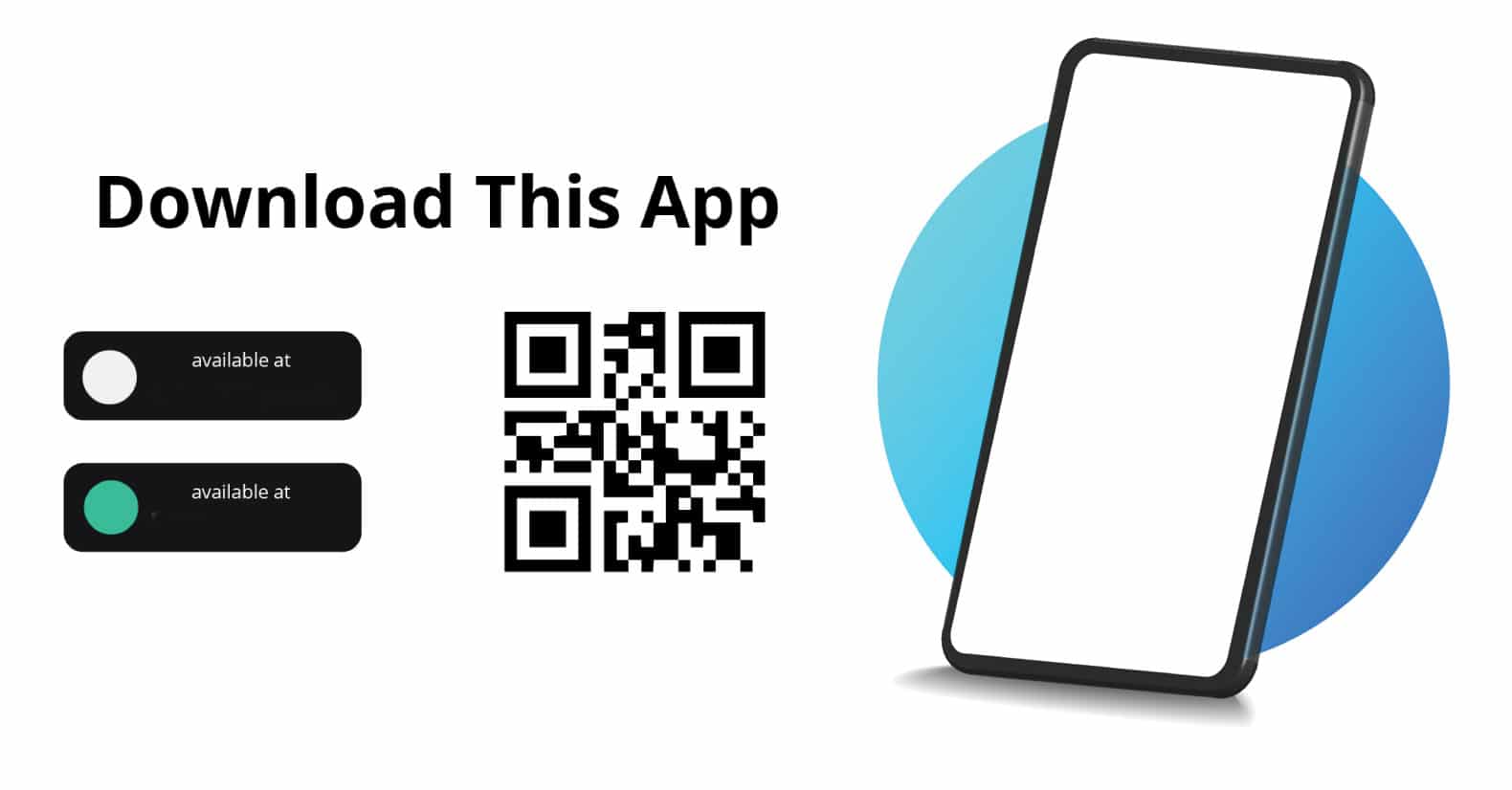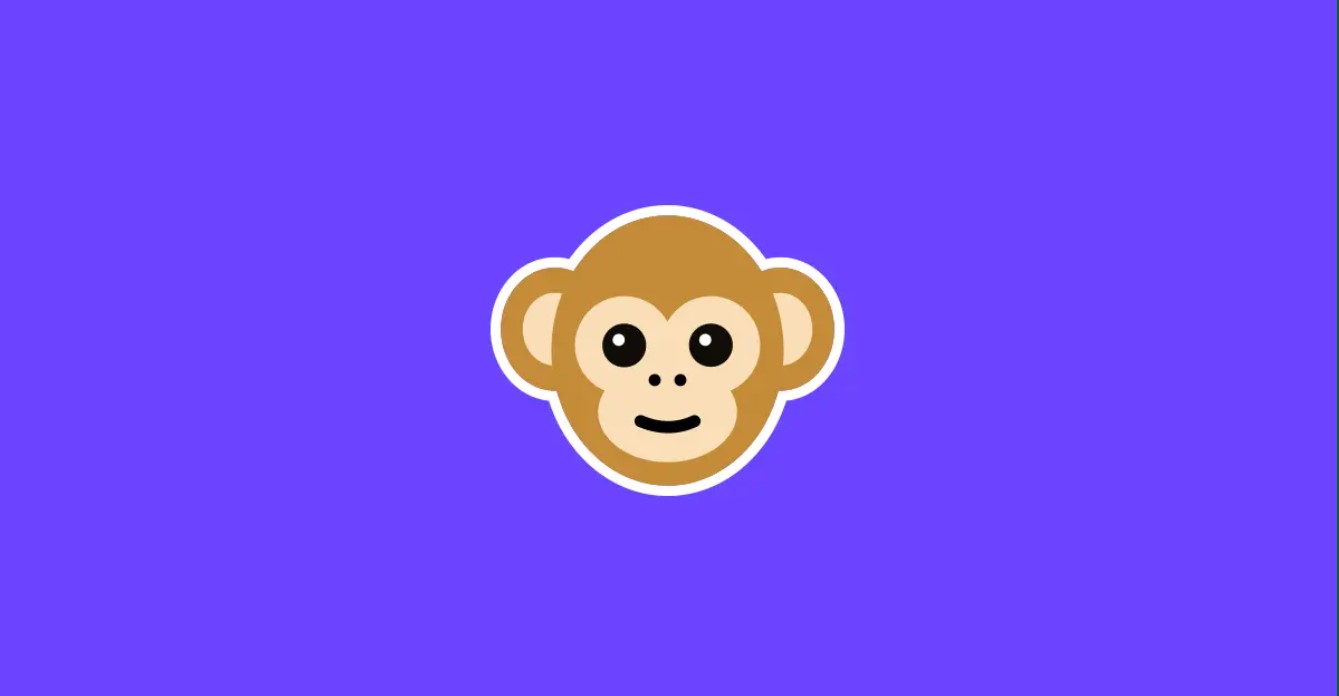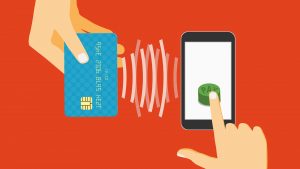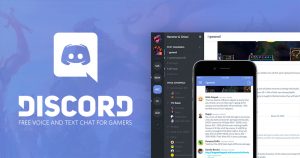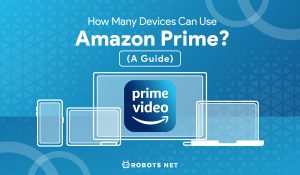Introduction
Welcome to the digital era, where millions of apps are vying for attention in the app stores. With the increasing competition, it can be a challenging task to get people to not only notice your app but also download it. However, with the right strategies and a well-executed plan, you can enhance your app’s visibility and convince people to give it a try.
In this article, we will explore effective techniques to attract more downloads for your app. From creating an appealing app icon to engaging with users and offering exceptional customer support, we will cover various aspects of app promotion. By implementing these strategies, you can increase the chances of getting your app downloaded and ultimately achieve success.
It is important to note that generating downloads and achieving user engagement is an ongoing process. It requires continuous effort, analysis, and adaptation. So, let’s dive in and explore the different ways to grab people’s attention and get them excited about downloading your app.
Creating an Appealing App Icon
Your app icon is the first impression users will have of your app, so it needs to be visually appealing and memorable. A well-designed icon can pique curiosity and attract users to explore your app further. Here are some tips to create an appealing app icon:
- Keep it simple: A cluttered or complex icon can be confusing and unappealing. Stick to a clean and minimalistic design that represents the essence of your app.
- Choose relevant colors: Colors can evoke emotions and associations. Select colors that align with your brand and resonate with your target audience.
- Consider scalability: Your app icon will appear in various sizes across different devices and platforms. Ensure that it remains clear and recognizable even as a small thumbnail.
- Be distinctive and unique: Stand out from the competition by creating an icon that is distinct and memorable. Avoid clichés and generic designs.
- Reflect your app’s purpose: Your icon should give users an idea of what your app is about. Incorporate elements that represent the core features or functionality of your app.
- Test and iterate: Don’t settle for the first design. Gather feedback from your target audience and make necessary adjustments to create an icon that resonates with them.
An appealing app icon can significantly increase the likelihood of attracting potential users and driving downloads. It serves as a visual representation of your app’s quality, professionalism, and uniqueness. Take the time to invest in creating a captivating icon that accurately reflects your app’s value proposition and sets it apart from the competition.
Writing a Captivating App Description
An app description is your opportunity to showcase the features, benefits, and uniqueness of your app. It needs to quickly grab the attention of potential users and convince them to download it. Here are some tips for writing a captivating app description:
- Focus on the value proposition: Clearly communicate the problem your app solves and how it benefits users. Highlight the key features that make your app stand out and explain how it can improve their lives.
- Keep it concise: People have limited attention spans, so keep your app description concise and to the point. Use clear and concise language to convey your message efficiently.
- Use compelling language: Use persuasive and compelling language to capture the reader’s attention. Use action verbs and descriptive adjectives to make your app description more engaging.
- Highlight positive reviews and ratings: If your app has received positive reviews or high ratings, include them in your description. This social proof can build trust and credibility with potential users.
- Include visual elements: Use screenshots, app previews, or videos to give potential users a visual representation of what they can expect from your app. Visuals can greatly enhance the appeal of your app.
- Optimize for keywords: Conduct keyword research and incorporate relevant keywords in your app description. This will improve your app’s visibility in app store search results.
- Update and iterate: Continuously monitor the performance of your app description and make necessary updates based on user feedback and data. A/B testing can help you identify the most effective description.
A well-crafted app description can significantly influence the decision-making process of potential users. By effectively conveying the value and benefits of your app and optimizing it for keywords, you can increase the visibility and discoverability of your app in app stores, driving more downloads and user engagement.
Utilizing App Store Optimization Techniques
App Store Optimization (ASO) is the process of optimizing your app listing to improve its visibility and ranking in app store search results. By implementing ASO techniques, you can increase organic traffic to your app and ultimately drive more downloads. Here are some effective ASO techniques to utilize:
- Keyword research: Identify relevant keywords that users are likely to search for when looking for apps similar to yours. Incorporate these keywords strategically in your app title, description, and metadata to improve your app’s search rankings.
- Optimize app title and subtitle: Your app title and subtitle should clearly convey the purpose and value of your app. Include relevant keywords while maintaining clarity and conciseness.
- Write a compelling app description: Craft an engaging and informative app description that highlights the unique features, benefits, and value proposition of your app. Use relevant keywords naturally throughout the description.
- Add high-quality screenshots and videos: Visual content can greatly impact app conversion rates. Include attractive and informative screenshots and videos that showcase the key features and user experience of your app.
- Solicit positive reviews and ratings: Positive reviews and high ratings not only build credibility but also improve your app’s visibility in app stores. Encourage users to leave reviews and implement strategies to generate positive feedback.
- Monitor and analyze app performance: Regularly track and analyze key metrics such as downloads, retention rates, and user feedback. Use this data to make informed decisions and optimize your app further for better results.
- Continuously update and improve your app: App stores favor apps that are regularly updated. Release frequent updates with bug fixes, feature enhancements, and performance improvements to keep your app relevant and fulfill user expectations.
By implementing these ASO techniques, you can improve your app’s visibility in app store search results, drive more organic traffic, and increase the likelihood of getting your app downloaded. It is an ongoing process that requires monitoring, analysis, and adaptation to stay ahead of the competition.
Offering a Limited-Time Promotion or Discount
One highly effective strategy to attract more downloads and create a sense of urgency is to offer a limited-time promotion or discount for your app. People are more likely to take action when they perceive value and a sense of exclusivity. Here’s how you can leverage limited-time promotions or discounts to drive app downloads:
- Create a compelling offer: Develop an attractive promotional offer that provides tangible value to potential users. This could be a discounted price, a limited-time free trial, or exclusive in-app purchases.
- Set a clear time limit: Specify the duration of the promotion to create a sense of urgency and encourage users to take immediate action. Clearly communicate the start and end date of the offer to create a sense of scarcity.
- Promote the offer: Spread the word about your limited-time promotion across various channels. Utilize your app’s website, social media platforms, email newsletters, and app store listing to announce the offer and generate excitement.
- Create compelling visuals and banners: Design eye-catching visuals and banners to promote the limited-time offer. These visuals should clearly communicate the discount or promotion and be prominently displayed in your marketing materials.
- Utilize push notifications: Send push notifications to your existing app users to inform them about the limited-time offer. Encourage them to share the news with their friends and family to generate more downloads through referrals.
- Monitor and analyze results: Track the performance of your limited-time promotion to determine its effectiveness. Monitor the increase in downloads, user engagement, and in-app purchases during the promotional period.
- Consider partnering with other platforms or influencers: Collaborate with other apps, websites, or influencers to amplify the reach of your limited-time promotion. By tapping into their existing user base or followers, you can reach a wider audience and drive more downloads.
By offering a limited-time promotion or discount, you create a sense of urgency and exclusivity that can greatly entice users to download your app. It encourages immediate action and provides users with a compelling reason to try out your app. However, it’s important to strike a balance by not relying solely on promotions, but also focusing on the long-term value and benefits your app provides.
Building a Strong Online Presence and Brand Awareness
In a crowded app market, building a strong online presence and brand awareness is crucial to stand out from the competition and attract more app downloads. By establishing a recognizable brand and actively engaging with your target audience, you can create a loyal user base and increase your app’s visibility. Here are some strategies to build a strong online presence and brand awareness:
- Create a professional website: Develop a user-friendly and visually appealing website that showcases your app’s features, benefits, and values. Use consistent branding elements such as your app’s logo, color scheme, and typography to create a cohesive and recognizable brand identity.
- Optimize your website for search engines: Implement search engine optimization (SEO) techniques to increase the visibility of your website in search engine results. Conduct keyword research and incorporate relevant keywords into your website content.
- Build an active presence on social media platforms: Set up profiles for your app on popular social media platforms such as Facebook, Twitter, Instagram, and LinkedIn. Regularly share engaging and informative content, interact with your audience, and encourage user-generated content.
- Produce valuable content: Create a blog or resource section on your website to provide valuable content related to your app’s niche. Publish informative articles, how-to guides, or industry insights to establish yourself as an authoritative voice in your field.
- Engage with your audience: Respond to user comments, reviews, and inquiries promptly and professionally. Show genuine interest in your users’ feedback and engage in conversations to build trust and loyalty.
- Collaborate with influencers: Identify influencers or bloggers in your app’s niche and collaborate with them to promote your app. This can include guest blogging, product reviews, or sponsored content. Influencer endorsements can significantly boost your app’s visibility and credibility.
- Participate in relevant online communities: Join online forums, discussion boards, and groups related to your app’s niche. Share your expertise, answer questions, and provide helpful insights. This will help establish yourself as a knowledgeable and trusted authority in the community.
- Implement a content marketing strategy: Develop a content marketing plan that includes creating and promoting content across various channels like social media, email newsletters, and guest blogging. Deliver valuable content that resonates with your target audience and prompts them to engage with your app.
- Monitor brand mentions: Use social media listening tools to monitor brand mentions and conversations related to your app. Respond to both positive and negative mentions, address any issues, and show appreciation for positive feedback.
- Encourage user-generated content: Encourage your users to share their experiences with your app on social media or review platforms. User-generated content not only increases brand visibility but also builds trust among potential users.
By building a strong online presence and brand awareness, you can establish your app as a trusted and reputable choice for users. Consistently engaging with your audience, creating valuable content, and leveraging social media platforms can significantly increase your app’s visibility and drive more downloads.
Leveraging Social Media Platforms for App Promotion
Social media platforms provide powerful channels to reach and engage with a wide audience. By leveraging social media for app promotion, you can create buzz, drive downloads, and build a community of loyal app users. Here are some effective strategies to leverage social media platforms for app promotion:
- Choose the right platforms: Identify the social media platforms that are most relevant to your target audience. Focus your efforts on platforms where your potential users are most active and engaged.
- Create compelling profiles: Optimize your social media profiles by using consistent branding elements, such as your app’s logo, colors, and messaging. Write informative and engaging bios that highlight the unique features and benefits of your app.
- Share engaging content: Develop a content strategy that aligns with your app’s target audience and goals. Share informative and entertaining content that provides value to your followers. This can include blog posts, videos, infographics, or user-generated content.
- Use visuals effectively: Visual content is highly engaging on social media. Incorporate high-quality images, videos, and animations to catch the attention of your audience. Use visually appealing graphics and creative designs that represent your app’s brand.
- Run paid advertising campaigns: Allocate a portion of your marketing budget to run paid advertising campaigns on social media platforms. Target your desired audience based on demographics, interests, and behaviors to maximize reach and drive app downloads.
- Engage with your audience: Actively engage with your audience by responding to comments, messages, and mentions. Encourage conversations, ask questions, and solicit feedback to foster a sense of community and build relationships with your users.
- Host contests and giveaways: Organize contests, giveaways, or other interactive activities to encourage user participation and engagement. Offer a chance to win exclusive prizes or discounts to incentivize users to share and promote your app.
- Collaborate with influencers: Collaborate with social media influencers or bloggers who have a significant following in your target market. They can help promote your app to their audience and provide valuable endorsements and reviews.
- Encourage user-generated content: Encourage your users to create and share content related to your app. This can include testimonials, reviews, tutorial videos, or creative uses of your app. User-generated content not only promotes your app but also builds trust with potential users.
- Measure and analyze your results: Use social media analytics tools to track the performance of your social media campaigns. Measure key metrics such as engagement rate, reach, conversions, and app downloads. Use this data to refine your strategies and optimize your social media promotion efforts.
By leveraging social media platforms effectively, you can engage with your target audience, build brand awareness, and drive app downloads. Consistent and strategic social media promotion can significantly expand your app’s reach and help you build a loyal community of app users who advocate for your app.
Implementing Referral Programs and Incentives
Referral programs and incentives are powerful strategies to encourage your existing users to promote your app and attract new users. By implementing these programs, you can leverage your users’ networks and tap into a wider audience. Here are some effective ways to implement referral programs and incentives:
- Create a referral program: Develop a referral program that rewards users for referring new users to your app. Offer incentives such as discounts, exclusive access to premium features, or in-app currency. Make it easy for users to refer others by providing unique referral links or codes.
- Offer incentives to both referrers and new users: To motivate your existing users to refer others, provide enticing incentives for successful referrals. At the same time, offer incentives to new users who sign up through a referral, giving them a positive first experience with your app.
- Promote your referral program: Spread the word about your referral program through various marketing channels, including your app’s website, social media platforms, email newsletters, and in-app notifications. Highlight the benefits and rewards of participating in the program.
- Implement sharing features: Integrate social sharing features into your app, allowing users to easily share their experiences and invite others to download your app. This can include sharing on social media platforms, messaging apps, or email.
- Track referrals and incentivize top referrers: Monitor and track the success of each referral made by your users. Identify top referrers and reward them with additional incentives or recognition. This encourages healthy competition and motivates users to refer even more people.
- Create loyalty programs: Implement a loyalty program that rewards users for their continuous engagement and usage of your app. Offer exclusive perks, discounts, or early access to new features for loyal users. This not only incentivizes retention but also encourages users to refer others to benefit from the loyalty program.
- Provide personalized incentives: Tailor incentives or rewards based on the preferences and behaviors of your users. Personalized offers can greatly increase the effectiveness of your referral program and make users feel valued.
- Encourage social proof: Showcase the success of your referral program by sharing testimonials or success stories from users who have benefited from it. This social proof builds trust and encourages others to participate in the program.
- Measure and analyze results: Track the performance of your referral program by monitoring the number of referrals, conversion rates, and user engagement. Analyze the data to identify trends, measure the effectiveness of different incentives, and make necessary adjustments.
Implementing referral programs and incentives can help you leverage the power of word-of-mouth marketing and turn your existing users into brand advocates. By rewarding both referrers and new users, offering personalized incentives, and continually optimizing your program, you can significantly increase user acquisition and app downloads.
Seeking Partnerships and Collaborations with Influencers
In today’s digital landscape, influencers have become powerful voices that can greatly impact consumer behavior and brand perception. By seeking partnerships and collaborations with influencers, you can tap into their engaged audience and leverage their influence to promote your app. Here are some strategies to effectively collaborate with influencers:
- Identify relevant influencers: Research and identify influencers who have a strong following and influence within your app’s target audience. Look for influencers who align with your app’s values, niche, and demographic.
- Establish a connection: Reach out to influencers through email or social media, expressing your interest in collaborating. Personalize your outreach and explain how your app can benefit their audience. Highlight the value and benefits of partnering with your app.
- Offer value to influencers: Provide a compelling value proposition to influencers. Offer them exclusive access to your app, early beta testing, or promotional codes to share with their audience. Show them how collaborating with your app can help them provide value to their followers.
- Co-create content: Collaborate with influencers on creating engaging and authentic content that showcases your app. This can include sponsored blog posts, social media shoutouts, product reviews, or tutorial videos. Allow influencers to express their genuine opinions and experiences with your app.
- Promote influencer content: Once the content is created and published by the influencers, actively promote it on your app’s social media channels, website, and other marketing platforms. This amplifies the reach of the influencer’s content and helps generate more visibility for your app.
- Track and measure results: Monitor the performance and impact of the influencer collaborations. Track metrics such as engagement rates, click-through rates, app downloads, and user feedback. Use this data to assess the success of each partnership and determine the return on investment.
- Build long-term relationships: Instead of one-off collaborations, aim to establish long-term relationships with influencers. Nurture the relationship by providing ongoing support, exclusive updates, and incentives. This helps create a network of influencers who can continue promoting your app over time.
- Engage with influencer followers: Actively engage with the influencer’s audience by responding to comments, answering questions, and participating in discussions. This helps build trust, establish your app’s credibility, and encourage followers to download your app.
- Consider micro-influencers: While larger influencers may reach a broader audience, micro-influencers often have highly engaged and loyal followers within a specific niche. Collaborating with micro-influencers can lead to more targeted exposure and higher conversion rates.
- Comply with disclosure guidelines: It is important to ensure that influencer collaborations comply with relevant disclosure guidelines, such as clearly stating when content is sponsored or when a promotional code is provided.
By seeking partnerships and collaborations with influencers, you can tap into their established credibility and loyal audience. Leveraging influencer relationships helps you expand your app’s reach, build trust, and increase app downloads, ultimately driving growth and success for your app.
Encouraging Positive App Reviews and Ratings
Positive app reviews and ratings play a crucial role in building trust and credibility among potential users. They serve as social proof, influencing the decision-making process and encouraging others to download and try your app. Here are some effective strategies to encourage positive app reviews and ratings:
- Deliver exceptional user experience: Focus on creating an app that provides a seamless and enjoyable user experience. Prioritize app performance, usability, and functionality. When users have a positive experience with your app, they are more likely to leave positive reviews and ratings.
- Simple and intuitive feedback process: Make it easy for users to provide feedback and leave reviews within your app. Implement a simple and intuitive feedback process that prompts users to rate and review your app at the right time, such as after completing a successful action or achieving a goal.
- Incentivize reviews: Offer incentives or rewards to users who leave app reviews and ratings. This can be in the form of in-app currency, exclusive content, or additional app features. Incentives serve as a motivator for users to take the time to share their positive experiences with others.
- Prompt satisfied users for reviews: Identify users who have had a positive experience with your app and prompt them to leave a review. Use push notifications, in-app messaging, or email to kindly ask them to share their feedback. Make it easy for them to navigate to the app store and leave a review directly.
- Respond to app reviews: Actively monitor and respond to user reviews, both positive and negative. Show your appreciation to users who leave positive reviews, letting them know their feedback is valuable. Responding to reviews demonstrates that you value your users’ opinions and are committed to improving their experience.
- Provide excellent customer support: Encourage users to reach out to you for assistance and support. Provide prompt and helpful responses to their inquiries or issues. When users receive excellent customer support, they are more likely to share positive reviews and ratings.
- Showcase positive reviews: Share positive app reviews on your website, social media channels, and other promotional materials. Highlighting positive feedback helps build trust and credibility for potential users who may be considering downloading your app.
- Request reviews via email or newsletters: Leverage your email list or newsletter subscribers to request app reviews. Send personalized emails asking satisfied users to share their experiences and leave a review. Make it easy for them by including direct links to the app store.
- Focus on app store optimization: Optimize your app store listing with relevant keywords and engaging descriptions. When users discover your app through app store search results, they are more likely to be motivated to leave positive reviews and ratings.
- Make improvements based on user feedback: Actively listen to user feedback and make continuous improvements to your app based on their suggestions. When users see that their feedback is taken into account and changes are implemented, they are more likely to share positive reviews to support your app’s growth.
By implementing strategies to encourage positive app reviews and ratings, you can establish trust, increase app downloads, and drive user engagement. Remember to prioritize delivering exceptional user experiences, engaging with your users, and continuously improving your app based on their feedback.
Engaging with App Users and Offering Exceptional Customer Support
A key aspect of fostering user loyalty and satisfaction is to engage with your app users and provide exceptional customer support. By actively connecting with your users and promptly addressing their concerns, you can build strong relationships and encourage positive app experiences. Here are some strategies for engaging with your app users and offering exceptional customer support:
- Encourage and respond to user feedback: Create channels for users to provide feedback, such as in-app support, email, or social media. Encourage users to share their thoughts, suggestions, and concerns. Respond to user feedback promptly, addressing their questions or concerns to demonstrate that you value their input.
- Be proactive in communication: Proactively reach out to your users with relevant updates, announcements, and special offers. Keep them engaged and informed about new features, improvements, or upcoming events related to your app. This helps create a sense of community and builds brand loyalty.
- Personalize the user experience: Use data and user insights to personalize the app experience for each user. Tailor recommendations, content, and notifications to their preferences and behaviors. By providing a personalized experience, you can enhance user engagement and satisfaction.
- Implement in-app messaging and live chat: Offer in-app messaging or live chat support to provide users with real-time assistance. This allows users to get immediate help and guidance within the app, enhancing their overall experience and reducing potential frustrations.
- Develop a comprehensive knowledge base: Create a knowledge base or an FAQ section within your app to address common questions and issues. Include step-by-step guides, tutorials, and troubleshooting tips to help users find solutions to their problems independently.
- Train customer support agents: If you have a dedicated support team, provide them with comprehensive training on your app’s features, functionalities, and potential issues. Equip them with the knowledge and tools to provide efficient and friendly customer support.
- Monitor and track customer support metrics: Monitor and track key customer support metrics, such as response time, resolution time, customer satisfaction, and feedback ratings. Analyze this data to identify areas for improvement and ensure that you are consistently meeting user needs.
- Engage on social media: Monitor and engage with users on social media platforms where your app has a presence. Respond to comments, messages, and mentions promptly. Use social media as an opportunity to showcase your app’s personality, address concerns, and foster positive interactions.
- Reward loyal customers: Recognize and reward loyal app users to show appreciation for their ongoing support. Offer exclusive perks, discounts, or early access to new features to loyal users. This not only incentivizes ongoing engagement but also encourages them to advocate for your app.
- Continuously improve based on user feedback: Evaluate user feedback and prioritize areas for improvement. Regularly release updates that address user concerns, fix bugs, and introduce new features. Keeping the app up-to-date and responsive to user needs helps demonstrate your commitment to providing an exceptional user experience.
Engaging with your app users and providing exceptional customer support play a vital role in building lasting relationships with your user base. By actively listening, responding, and continuously improving, you can foster user satisfaction, drive positive app experiences, and encourage user loyalty.
Monitoring App Analytics and Making Continuous Improvements
Monitoring app analytics and making continuous improvements is essential for the growth and success of your app. By analyzing user behavior, measuring key metrics, and implementing data-driven changes, you can enhance the user experience and drive app performance. Here are some strategies for effectively monitoring app analytics and making continuous improvements:
- Track key metrics: Identify and track key performance metrics that align with your app’s goals. This may include user acquisition, retention rate, engagement metrics, conversion rates, and in-app purchases. Utilize mobile analytics tools to gather comprehensive data on user behavior.
- Analyze user behavior: Dive deep into app analytics and understand how users interact with your app. Identify patterns, trends, and areas for improvement. Analyze user flows, navigation paths, and drop-off points to optimize the user journey and maximize conversions.
- Implement A/B testing: Utilize A/B testing to compare different variations of your app’s elements, such as features, layouts, or visuals. By systematically testing and analyzing different options, you can make data-driven decisions to optimize user experience and drive user engagement.
- Collect user feedback: Actively gather user feedback through surveys, in-app rating prompts, or feedback forms. Understand user pain points, suggestions, and feature requests. This valuable input can provide insights for improving your app and meeting user expectations.
- Maintain app performance: Monitor app performance metrics, such as app load time, crashes, and errors. Use crash reporting tools to identify and fix bugs promptly. A seamless and reliable app experience enhances user satisfaction and encourages positive app reviews.
- Stay updated with industry trends: Keep up with the latest trends, standards, and best practices in the app industry. This includes design trends, user preferences, and technological advancements. Continuously adapting to the evolving landscape helps your app stay relevant and competitive.
- Engage in competitor analysis: Research and analyze your competitors’ apps to gain insights into their strengths and weaknesses. Identify opportunities for differentiation and improvement. Understanding your competitive landscape can guide your app’s strategic decisions.
- Leverage user segmentation: Segment your user base based on various attributes, such as demographics, behavior, or engagement level. This allows you to personalize communications, target specific user groups, and tailor features or updates to meet their specific needs.
- Listen to user reviews and ratings: Regularly monitor and analyze user reviews and ratings in app stores. Gain insights into user sentiments, identify common issues, and address concerns in future updates. This demonstrates your commitment to user satisfaction and fosters positive app experiences.
- Iterate and release updates: Based on the insights gained from analytics and user feedback, iterate on your app. Release updates that address user needs, incorporate new features, and fix issues. Regularly communicating updates to users helps maintain their interest and engagement.
Monitoring app analytics and making continuous improvements is an ongoing process that drives the evolution and success of your app. By understanding user behavior, analyzing data, and staying attentive to user feedback, you can iterate and optimize your app, ensuring it remains relevant, user-friendly, and engaging for your target audience.
Conclusion
Getting people to download your app requires a strategic and comprehensive approach. By implementing the strategies discussed in this article, you can significantly increase the visibility of your app, attract more downloads, and build a loyal user base. Let’s recap some of the key strategies covered:
- Create an appealing app icon that stands out and accurately represents your app’s value.
- Write a captivating app description that highlights the unique features and benefits of your app.
- Utilize app store optimization techniques to improve your app’s visibility in search results.
- Offer limited-time promotions or discounts to create a sense of urgency and incentivize downloads.
- Build a strong online presence and brand awareness through websites, social media, and content marketing.
- Leverage social media platforms for app promotion by sharing engaging content and collaborating with influencers.
- Implement referral programs and incentives to encourage users to refer others to your app.
- Encourage positive app reviews and ratings by providing outstanding user experiences and exceptional customer support.
- Engage with your app users, actively listen to their feedback, and continually improve your app based on user insights.
- Monitor app analytics to track key metrics, understand user behavior, and make data-driven decisions.
Remember, app promotion is an ongoing process that requires dedication and adaptation. Regularly monitor the performance of your strategies, analyze user feedback, and stay up-to-date with industry trends. By continuously improving your app and engaging with your users, you can set your app on the path to success in the highly competitive app market.







